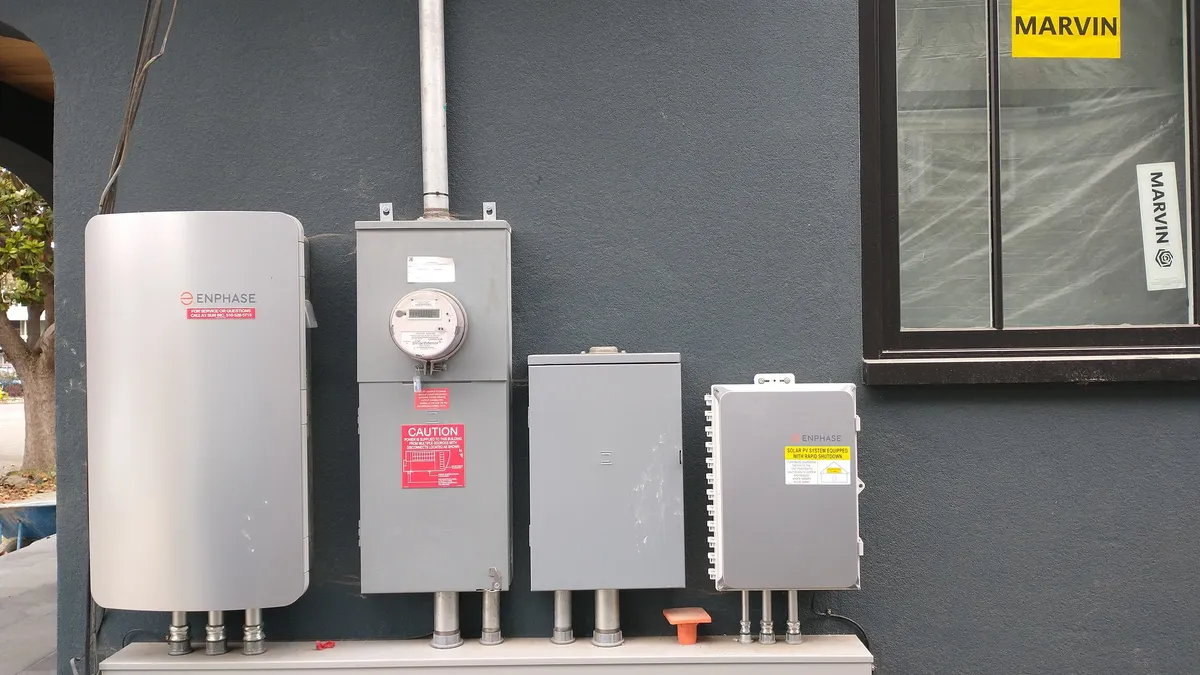A survey of the demand response (DR) programs offered by utilities in 2017 shows the resource is not only growing but also rapidly evolving.
The 2018 Utility Demand Response Market Snapshot, a team effort by Smart Electric Power Alliance (SEPA), Navigant and the Peak Load Management Alliance, shows a more holistic view of how the utility grid can most efficiently consume energy as its applications developed from being an emergency load reduction program.
The report estimates 10.7 GW of demand response programs were dispatched last year out of a total reported enrollment of 18.3 GW of capacity, based on DR program offerings from 155 utilities last year. The DR snapshot also highlights the staying power of switch-based air conditioning (AC) programs and additional uses for DR as a "sponge" for solar, as well as the commercial and industrial (C&I) segments' dominance of the DR space.
"Demand response in some cases is helping to move away from traditional peak load reduction and towards integrating renewable and other distributed resources," Brenda Chew, lead author of the study and SEPA analyst, said during a webinar on the report earlier this month.
Beyond "keeping the lights on"
While the utility sector has moved past DR as primarily a way to keep the lights on (though it can do that), this is not the end of the evolution. The DR market has essentially learned to walk, Mike DeBendittis, vice president of product at Energy Hub, said during the report's webinar, musing that the market is not crawling anymore, but still not quite running.
That change is coming soon, he said.
Energy Hub estimates 40 million customer-owned behind-the-meter (BTM) distributed energy resources (DERs) will be coming online in the next five years: a mix of batteries, thermostats, smart solar inverters, grid-tied water heaters and electric vehicles.
"When you talk about numbers this large, it's a huge challenge for the grid, but also a huge opportunity to manage those assets," DeBenedittis said.
A big chunk of those DERs will be smart thermostats, which remain utilities' most popular offering.
"At-scale BYOT is here and it is real."

Mike DeBendittis
Vice president of product, Energy Hub
There are now 1.4 million customers with smart thermostats, said DeBenedittis, and one reason for the success has been the growth of Bring Your Own Thermostat (BYOT) programs which are benefiting from advances in interoperability.
"At-scale BYOT is here and it is real," DeBenedittis said, referencing five utilities that have 100,000 thermostats enrolled between them: Southern California Edison, Avangrid, Austin Energy, PSEG Long Island and BGE.
Despite the growth in smart thermostats, their stalwart forebearers — switch-based AC programs — are still out there.
"In the mass market segment about 80 switch programs accounted for the largest portion of mass market demand response capacity, followed by thermostats, behavioral and water heater programs," Chew said.
AC switching programs made up 3.4 GW of enrolled demand response capacity last year compared with 1.2 GW from smart thermostat programs, as shown in the figure below.
"Utilities will try and use their legacy systems until their end of life, or replace on an as-needed basis," Navigant principal analyst and report co-author Brett Feldman told Utility Dive. "They're not going to go out and retrofit everything all at once. But as the technology dies or [...] if a customer has a thermostat they want to enroll, maybe they will switch. So it's on a rolling basis, not a one-time, big capital expenditure."
Water heaters accounted for the smallest portion of mass market enrollment, just 300 MW, but according to Feldman interest in the programs is growing. There are roughly 50 million electric water heaters in the United States, and according to Brattle Group their ability to act as flexible grid assets, shifting their charging to off-peak times, or when there is excess renewable energy, could save customers millions while allowing utilities better control over their loads.
"Water heaters are gaining interest," said Feldman. "Some water heater manufacturers are starting to build DR capability right into their models so you don't even need to put an additional device on it, they can communicate directly with the utility."
"[...] utilities are looking at more behavioral types of approaches to keep their programs cost-effective."

Brett Feldman
Principal analyst, Navigant
And while interest in behavioral demand response programs has tapered, Feldman said programs continue to grow. LED lighting becomes more common, utilities will find less savings opportunity in hardware retrofits.
"There won't be as much typical hardware-based savings so, from that perspective, utilities are looking at more behavioral types of approaches to keep their programs cost-effective," he said.
C&I dominates
SEPA's survey highlighted the growing representation of C&I DR programs.
"Over half of that reported enrolled demand response capacity," representing about 12 GW, came from the C&I market segment, Chew said in the webinar. Of the total reported enrolled capacity, 39.2% fell under customer-initiated C&I DR programs.
Automation is more common in residential DR programs, while approximately two-thirds of C&I enrolled capacity uses customer-initiated programs wherein the utility sends a signal requesting a load modification.
Automated demand response programs in the C&I segment reduced demand through "HVAC and pumps, followed by lighting, and load shifting through energy storage," the report said. For customer-initiated programs, "the majority of customers are achieving their demand reduction through process or production deferral, followed by lighting, HVAC and pumps."
As a case study into C&I applications, the report describes Hawaiian Electric's fast DR program that allows customers to participate if they are able to curtail load with as little as 10-minute notice. The program includes both semi-automated and automated activation. Minimum load to sign up for the program is 50 kW and customers benefit through committing load and reductions.
And the program is growing: HECO subsidiary Maui Electric got approval from state regulators last year to increase its fast DR pilot to 5 MW, up from 0.2 MW.






















